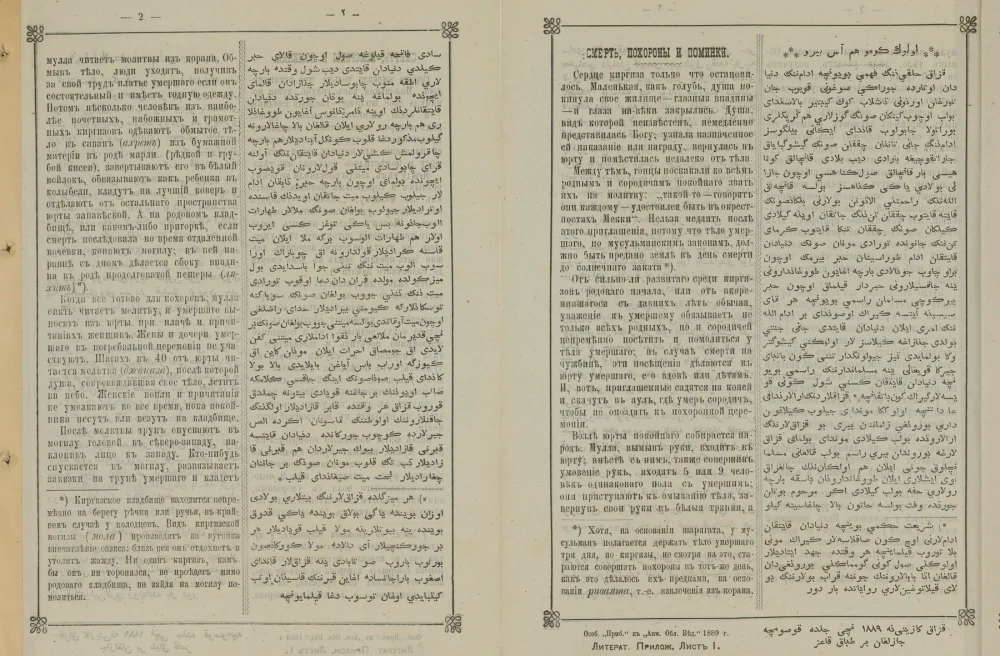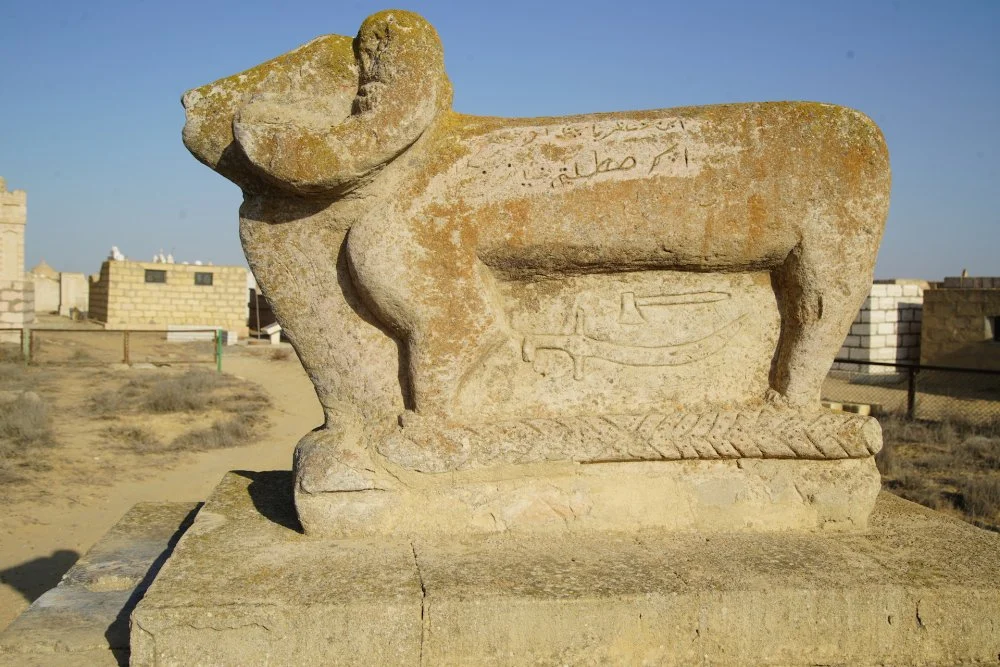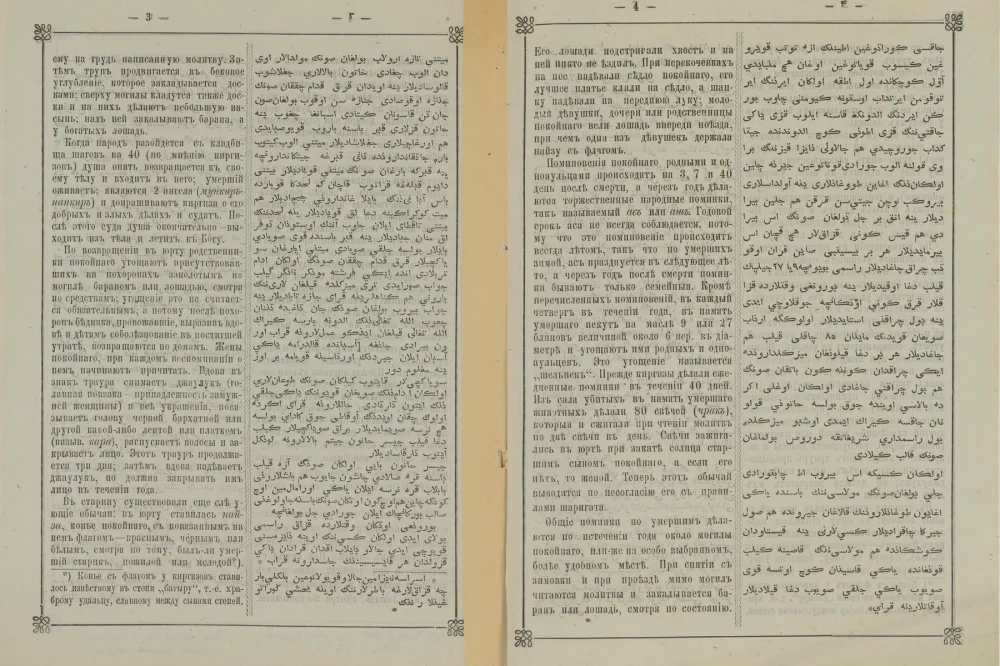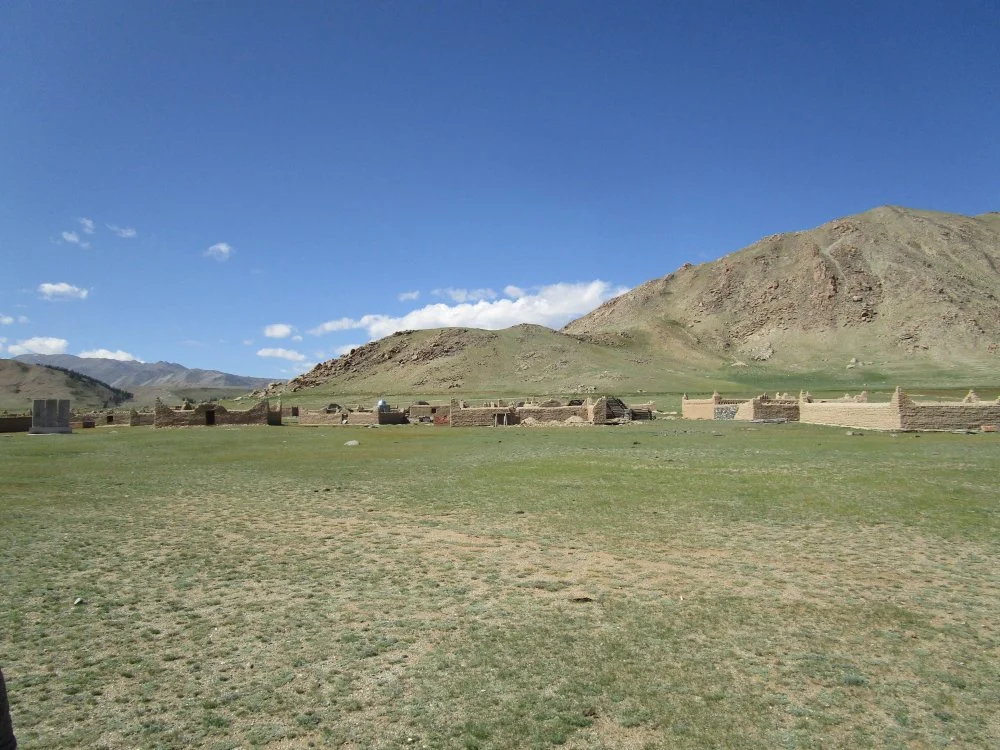As the nineteenth century gave way to the twentieth, a great wave of awakening surged through Kazakh intellectuals, sparking a passionate quest for knowledge. This outpouring of intellectual zeal led to an explosion of new magazines and newspapers being published in Kazakh, heralding the dawn of a new era in sharing culture.
However, what these intellectuals wrote went beyond only spreading knowledge. Soon, a variety of publications emerged, covering topics like business, society, politics, art, and humor. Qalam invites you to explore snippets from Kazakh publishing culture and history, offering a glimpse into the important issues of the past.
This article, authored anonymously, meticulously and reverently depicts the burial traditions of the Kazakhs. The traditions described here vividly reveal the fusion of steppe heritage with Islamic law.
The Kazakh’s heart has just stopped, and his tiny soul, like a little dove, abandons its home. His eyes now closed forever and his soul, its form unknown, immediately presents itself to God to discover what punishment or reward awaits him. He returns to the yurt and settles in right next to the body.
Meanwhile, messengers on horseback gallop off to find relatives and clan members of the deceased, calling them to prayer and saying to each one: ‘So-and-so deserves to rest near Mecca. Do not waste any time upon receiving this call as the deceased must be laid to rest before sunset on the day of their passing per Muslim law.’i
With roots in the strong principles developed among Kazakh clans or in long-standing customs, respect for the deceased obliges not only all relatives but also clansmen to pay their respects and pray before the body of the deceased. In the event that a clan member’s death occurs in a foreign land, a condolence visit must be made to the yurt of the deceased, his widow, or his children. Once the invitation is received, people quickly hop on their horses and ride off to the village of the deceased to avoid being late for the funeral ceremony.

A page from the Kyrgyz Steppe Newspaper/from an open access
Those invited gather near the deceased’s yurt, and the mullah, having already washed his hands, enters the yurt along with others who have also washed their hands (approximately five to nine people of the same sex as the deceased). At this moment, after wrapping their hands in white cloth, they begin washing the body as the mullah reads from the Koran.
After the body is washed, people begin to leave, having received the garments of the deceased in exchange for their efforts, particularly if he was affluent and had appropriate clothing. Then, a group of the most honorable, pious, and literate Kazakhs wrap the washed body in a shroud (akhret) made of muslin (a gauze-like cotton fabric with a simple weave), then cover it in white felt, swaddling the body like a child in a cradle. Afterward, the deceased is placed on a luxurious rug that is carefully separated from the rest of the yurt by drawing a curtain for privacy. A grave is then dug either in the family cemetery or on a hillside if the death occurred during a migration. Along the bottom of the grave a depression is dug out on one side, like a cave extending into the hill (liakhit).i

A tombstone in the form of a ram figure (koytas) in the necropolis of Koshkar-ata. Kazakhstan/Wikimedia commons
When everything is ready for the funeral, the mullah says a prayer again, and the deceased is carried out of the yurt while the women cry and lament. The wives and daughters of the person who has passed away do not participate in the funeral ceremony. About forty steps from the yurt, a prayer (janaza) is read, after which the soul, which is still accompanying the body until that moment, flies off to heaven. Screaming and wailing accompany the deceased as he is carried or carted to the cemetery.
After a prayer, the deceased is lowered into his grave with his head pointed northwest and his face turned west. Then, one of the funeral party descends into the grave, unbinds the ties on the body, and places a written prayer on its chest. The body is moved into the side recess, which is then sealed off with boards. Boards are again used to seal off the grave from above, and then it is covered by a small mound of dirt. Depending on whether the deceased is rich or poor, a horse or a sheep is then slaughtered on the grave.

A page from the Kyrgyz Steppe Newspaper/from an open access
After people have dispersed forty steps from the cemetery (according to the customs of the Kazakh), the soul reenters the body and the deceased is resurrected. Two angels (Munkir–Nankir) appear and interrogate him about the good and evil deeds he did in life, and the angels pronounce their judgment. After this, the soul finally leaves the body and flies to God.
Upon returning to the yurt, the relatives of the deceased offer those who’d been present at the funeral mutton or horsemeat, depending on their means, from the graveside slaughter. This meal is not considered obligatory and, therefore, as the funeral concludes, after having said goodbye to the widow and children and expressing their grief at the loss that has befallen them, the invited guests return to their homes. The wife of the deceased begins to lament after each mention of her late husband. As a sign of mourning, the widow removes her jaulyq (a headband worn only by married women) and all her jewelry, covering her head with black velvet, a ribbon, or a scarf (qara). At this time, she lets her hair down and covers her face. This mourning lasts three days. Afterward, the widow again puts on the jaulyq, but now it must cover her face for a year.

Kazakh cemetery in Bayan-Ulgiy (Mongolia) © Zhar Zardyhan
In ancient times, other customs also existed. A naiza, or the spear of the deceased, was placed in the yurt with a flag tied to it, which was either red, black, or white depending on whether the deceased was old, elderly, or young.i
The tails of the deceased’s horses were trimmed and no one was to ride them. During migrations, the deceased’s saddle was placed on his horse, his best garment was placed on the saddle, and his hat was put on the pommel. Young girls, daughters, or relatives of the deceased led the horse at the front of a train, with one of the girls holding the naiza with a flag.
Relatives and local residents of the deceased commemorate his passing on the third, seventh and fortieth days following his death. They also hold a public wake a year later, an as or ash. The annual observation of the as is not always observed because these wakes always take place in the summer. Therefore, for those who died in the winter, the as is celebrated the following summer, and the one-year wake is observed only by the family. In addition to these customs, every three months, nine or twenty-seven flatbreads, each about 6 inches in diameter, are baked in butter and offered to relatives and other residents of the auyl (village) in memory of the deceased. Such offerings are called shelpek.
In the past, the Kazakhs held a wake every day for forty days. Using the fat of the dead animals, eighty chrak (candles) were crafted in memory of the person who had passed away. Two of these candles were lit every day while prayers were read. Candles were also lit in the yurt at sunset by the eldest son of the deceased, and in his absence, by the wife. This custom is now not being followed due to contradictions with the rules of Sharia.
Generally, wakes for the dead are held a year after their passing near the grave of the deceased, or at a specific, convenient location. Upon the arrival of spring or while driving past a grave, it is customary that passersby read prayers and that a sheep or horse be slaughtered, depending on the affluence of the passerby.
The Steppe Province Paper was published in Omsk from January 1, 1888 to April 12, 1902 in Kazakh and Russian as an appendix to the newspaper Akmola Regional Gazette. The main purpose of the newspaper is to familiarize the local population with the government decree.




